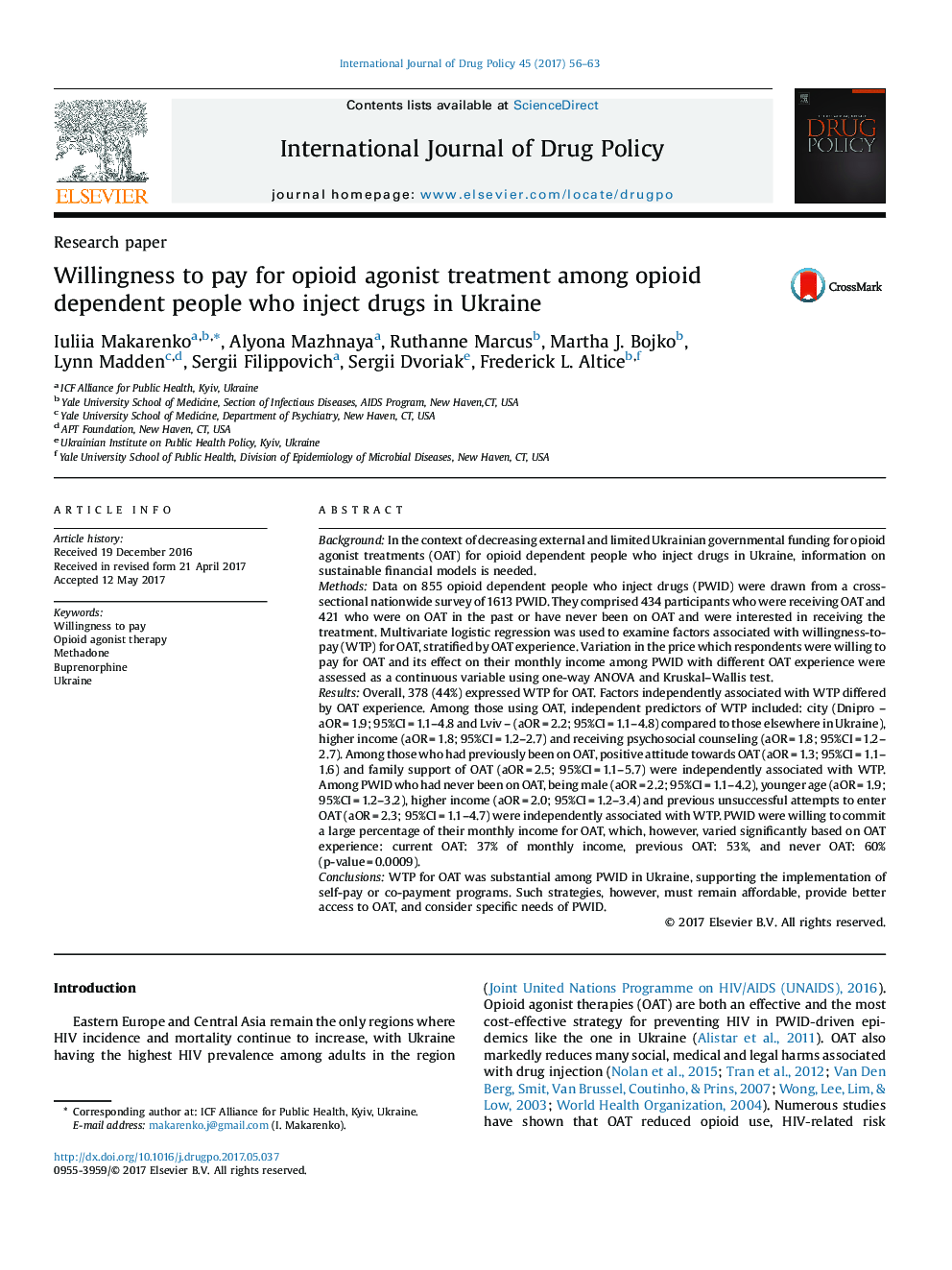| کد مقاله | کد نشریه | سال انتشار | مقاله انگلیسی | نسخه تمام متن |
|---|---|---|---|---|
| 5120852 | 1486260 | 2017 | 8 صفحه PDF | دانلود رایگان |
BackgroundIn the context of decreasing external and limited Ukrainian governmental funding for opioid agonist treatments (OAT) for opioid dependent people who inject drugs in Ukraine, information on sustainable financial models is needed.MethodsData on 855 opioid dependent people who inject drugs (PWID) were drawn from a cross-sectional nationwide survey of 1613 PWID. They comprised 434 participants who were receiving OAT and 421 who were on OAT in the past or have never been on OAT and were interested in receiving the treatment. Multivariate logistic regression was used to examine factors associated with willingness-to-pay (WTP) for OAT, stratified by OAT experience. Variation in the price which respondents were willing to pay for OAT and its effect on their monthly income among PWID with different OAT experience were assessed as a continuous variable using one-way ANOVA and Kruskal-Wallis test.ResultsOverall, 378 (44%) expressed WTP for OAT. Factors independently associated with WTP differed by OAT experience. Among those using OAT, independent predictors of WTP included: city (Dnipro - aOR = 1.9; 95%CI = 1.1-4.8 and Lviv - (aOR = 2.2; 95%CI = 1.1-4.8) compared to those elsewhere in Ukraine), higher income (aOR = 1.8; 95%CI = 1.2-2.7) and receiving psychosocial counseling (aOR = 1.8; 95%CI = 1.2-2.7). Among those who had previously been on OAT, positive attitude towards OAT (aOR = 1.3; 95%CI = 1.1-1.6) and family support of OAT (aOR = 2.5; 95%CI = 1.1-5.7) were independently associated with WTP. Among PWID who had never been on OAT, being male (aOR = 2.2; 95%CI = 1.1-4.2), younger age (aOR = 1.9; 95%CI = 1.2-3.2), higher income (aOR = 2.0; 95%CI = 1.2-3.4) and previous unsuccessful attempts to enter OAT (aOR = 2.3; 95%CI = 1.1-4.7) were independently associated with WTP. PWID were willing to commit a large percentage of their monthly income for OAT, which, however, varied significantly based on OAT experience: current OAT: 37% of monthly income, previous OAT: 53%, and never OAT: 60% (p-value = 0.0009).ConclusionsWTP for OAT was substantial among PWID in Ukraine, supporting the implementation of self-pay or co-payment programs. Such strategies, however, must remain affordable, provide better access to OAT, and consider specific needs of PWID.
Journal: International Journal of Drug Policy - Volume 45, July 2017, Pages 56-63
